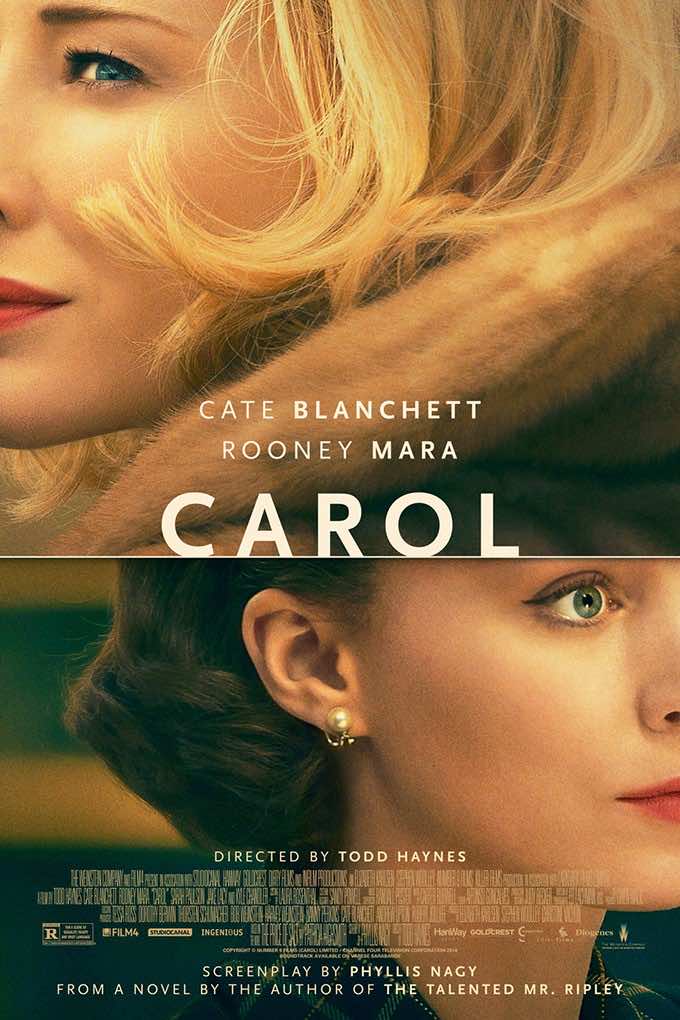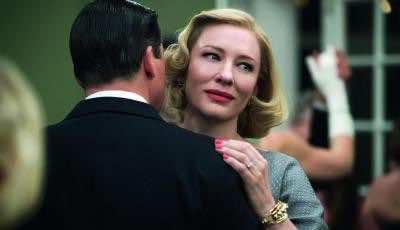 In his latest film, director Todd Haynes brings to life a love story between a wealthy housewife and a 20-something department store clerk in 1950s Manhattan. Although a portrayal of forbidden love between two women in the ’50s may seem like a familiar trope, Haynes’ portrayal in Carol, which is based on a The Price of Salt, Patricia Highsmith’s second novel, makes it fresh. The script, written by Phyllis Nagy goes beyond clichés and shows a deep connection between two women that transcends social class, age barriers and even adds a layer of complexity by making Carol a mother of a young child.
In his latest film, director Todd Haynes brings to life a love story between a wealthy housewife and a 20-something department store clerk in 1950s Manhattan. Although a portrayal of forbidden love between two women in the ’50s may seem like a familiar trope, Haynes’ portrayal in Carol, which is based on a The Price of Salt, Patricia Highsmith’s second novel, makes it fresh. The script, written by Phyllis Nagy goes beyond clichés and shows a deep connection between two women that transcends social class, age barriers and even adds a layer of complexity by making Carol a mother of a young child.
Rooney Mara plays Therese, a young, unaffected store clerk, who wants to become a photographer. She’s quiet and unsure of herself, with a bare bones life that includes a cold apartment and a boyfriend, Richard (Jack Lacy), with whom she has reticently made plans to travel to Europe. It is in the department store where Therese first comes in contact with Carol, a glamorous middle-aged woman who commands attention played superbly by Cate Blanchett. She is wearing fur and expensive leather gloves and carries herself with an aristocratic air. When she chats with Therese, Carol sets a flirtatious tone, listening to Therese’s recommendations for a Christmas present for her daughter. When Carol leaves her gloves behind (by mistake?), Therese takes it upon herself to return them. There is an instant attraction between both women, so when shy Therese calls Carol to return her gloves; Carol quickly follows up with an opportunity to meet face-to-face and Therese agrees.
The affair takes place when Carol’s marriage is falling apart and her controlling husband, played by Kyle Chandler, is trying to keep her in line by using their young daughter as a bargaining tool. In the midst of the drama, Carol not only falls deeply in love with Therese but also cares for her in a motherly way. Carol is also alluring, not only as a beautiful woman, but also in her mysterious and needy qualities.
Haynes’ details include a misè-en-scene that creates an environment of unbridled passion that seeps from the screen. The dialogue is sparse but profound, as are the detailed shots that suggest oppression, love and the high stakes of this affair. Therese seems undaunted, at first, leaving her boyfriend behind to follow Carol in her world, head on. The chemistry between the two women is electric, although the repercussions could be especially high for Carol, who has settled in the heart of suburban New York as a mother to a young girl she deeply loves. Nonetheless, Carol puts it all on the line and unravels onscreen only to reveal that the only great sacrifice is lying about who you are and who you love.
To be sure, Haynes does not mince the film’s message with Carol. In fact, the dialogue is sparse with lots of subtext, conveying the hidden-in-plain-sight nature of being gay in hetero-sexist 1950s America without ever using the word lesbian. But even more importantly, Haynes does not mince images either. Carol’s powerful imagery oozes into the audience, delivering a mood that unfolds slowly, yet  it is quite potent. The all-knowing glances exchanged between young Therese and the haughtily beautiful Carol, along with loving gestures, speak volumes of the fine acting coming from Mara and especially Blanchett. The camera lingers enough to let the audience catch up and inhabit this secret world that can only exist indoors in a sexually repressed America. When Therese, the budding photographer, shoots Carol with a camera she received as a gift from Carol, we can see how much she cares. The photographs are telling of the depth of feeling and the caring eye Therese has for the somewhat broken Carol.
it is quite potent. The all-knowing glances exchanged between young Therese and the haughtily beautiful Carol, along with loving gestures, speak volumes of the fine acting coming from Mara and especially Blanchett. The camera lingers enough to let the audience catch up and inhabit this secret world that can only exist indoors in a sexually repressed America. When Therese, the budding photographer, shoots Carol with a camera she received as a gift from Carol, we can see how much she cares. The photographs are telling of the depth of feeling and the caring eye Therese has for the somewhat broken Carol.
Within the confines of the small domain of a patriarchal society with strict class boundaries, enforced dress codes and morality clauses; Carol shows that love is one of the ways through in which challenging these power structures is not only possible but inevitable. After fleeing with Therese in a road trip, Carol returns to the fold as her husband pulls her back in by using their daughter. The sequence shows a desperate mother, willing to do whatever it takes to gain back her daughter. But after the first encounter, it becomes obvious that the marriage and Carol staying within that framework is an unsustainable deal. As Maya Angelou once said, “There is no greater agony than bearing an untold story inside you.” In that vein, Carol decides to let her own story be told, making sacrifices along the way to be able to gain herself, in her own terms.
Carol runs 118 minutes and is Rated R. It opens in our South Florida area, on Dec. 25, at the following theaters, but let’s start with the local indie art house: Coral Gables Art Cinema. Other theaters in Miami include:
AMC Aventura
Regal South Beach
AMC Sunset Place
In Palm Beach County, it shows at the following theaters:
Carmike Parisian 20 at City Place, West Palm Beach
Cinemark Palace, Boca Raton
Regal Shadowood, Boca Raton
It opened several weeks ago in the U.S. in other locations, check here for local listings. The Weinstein Company invited us to a preview screening for the purpose of this review and provided all images for this post.










